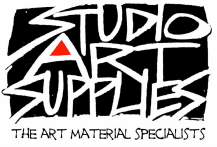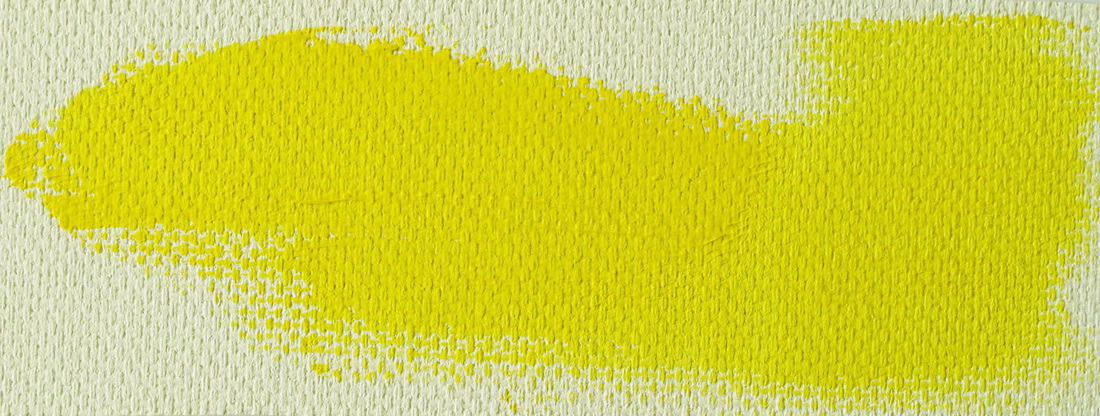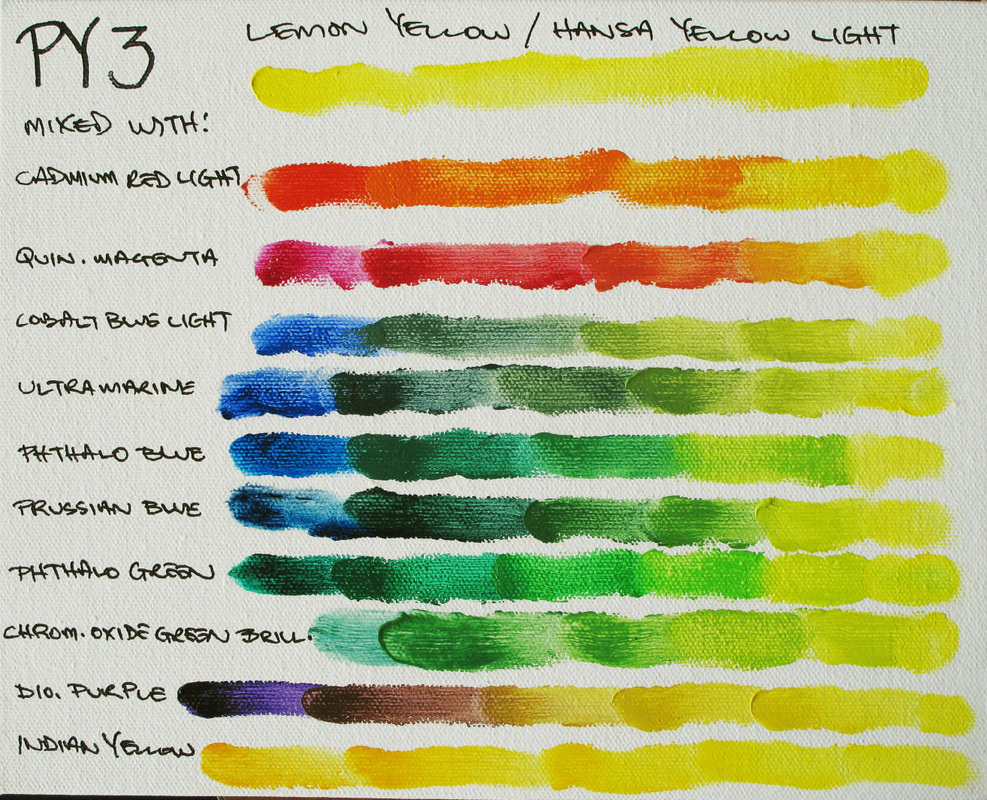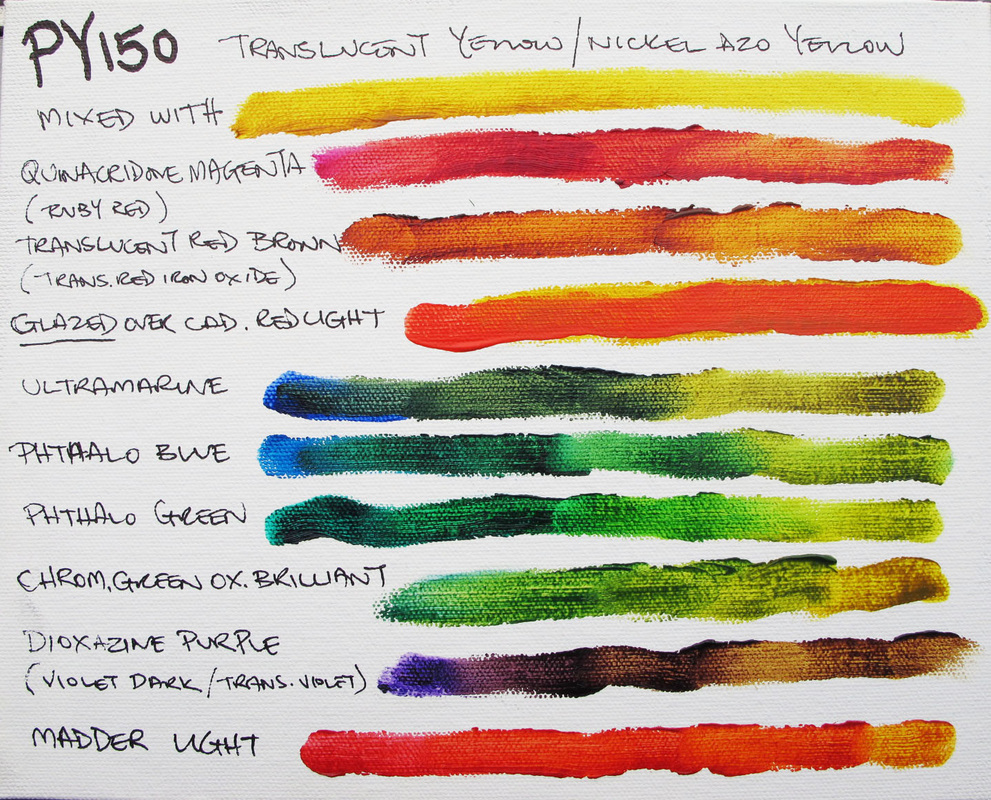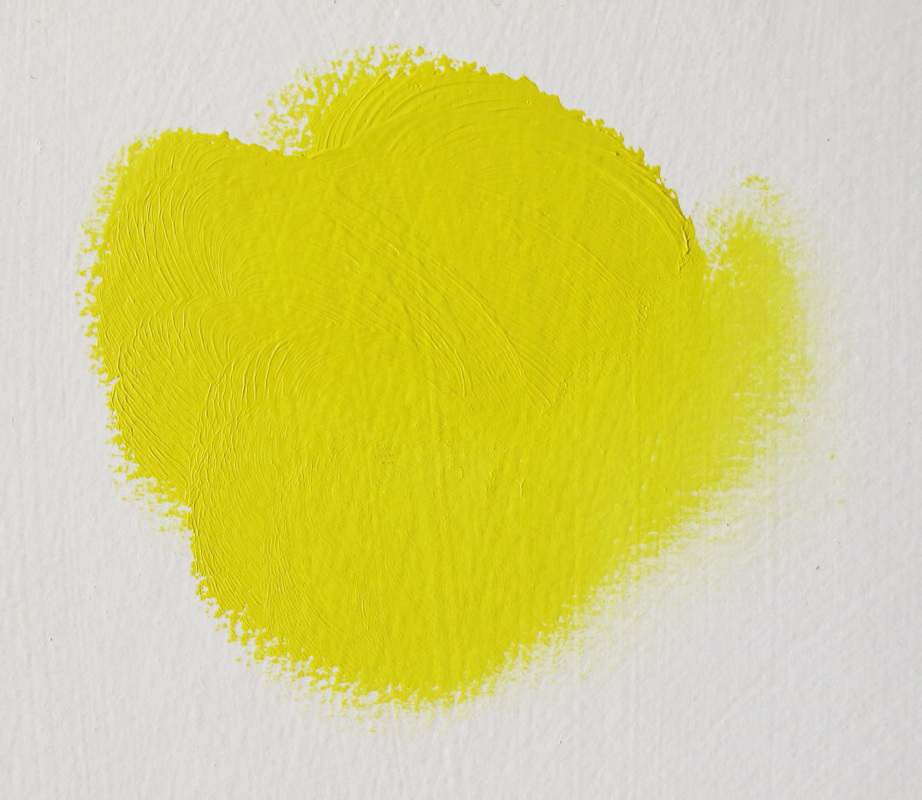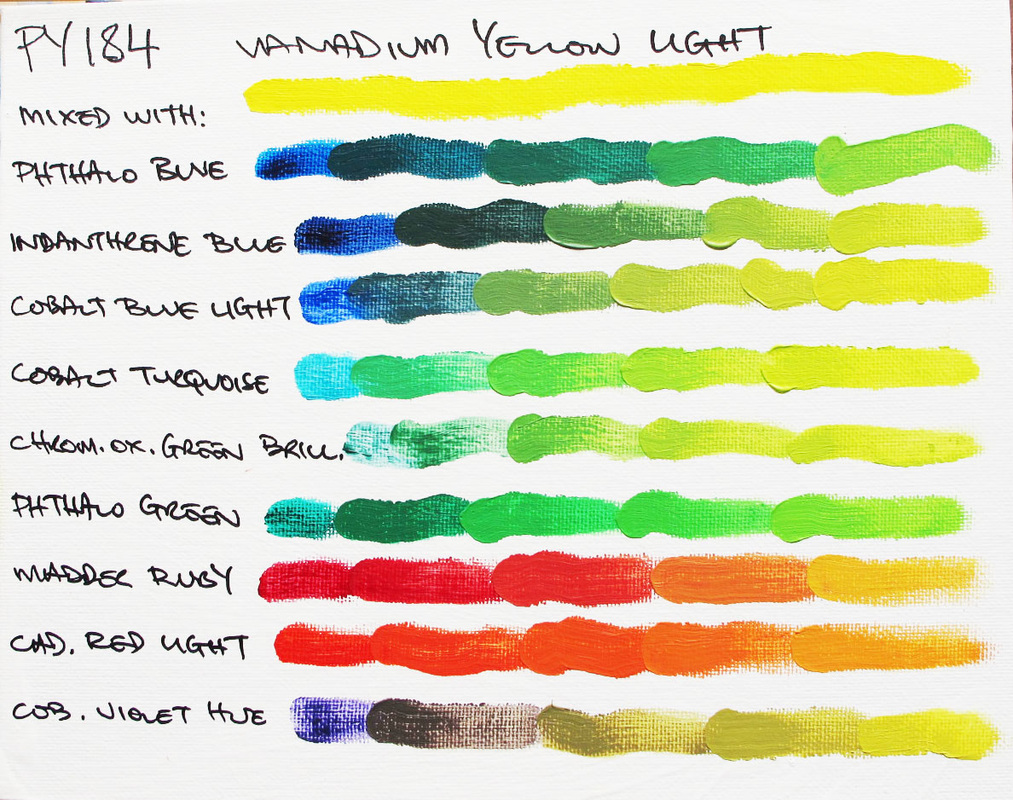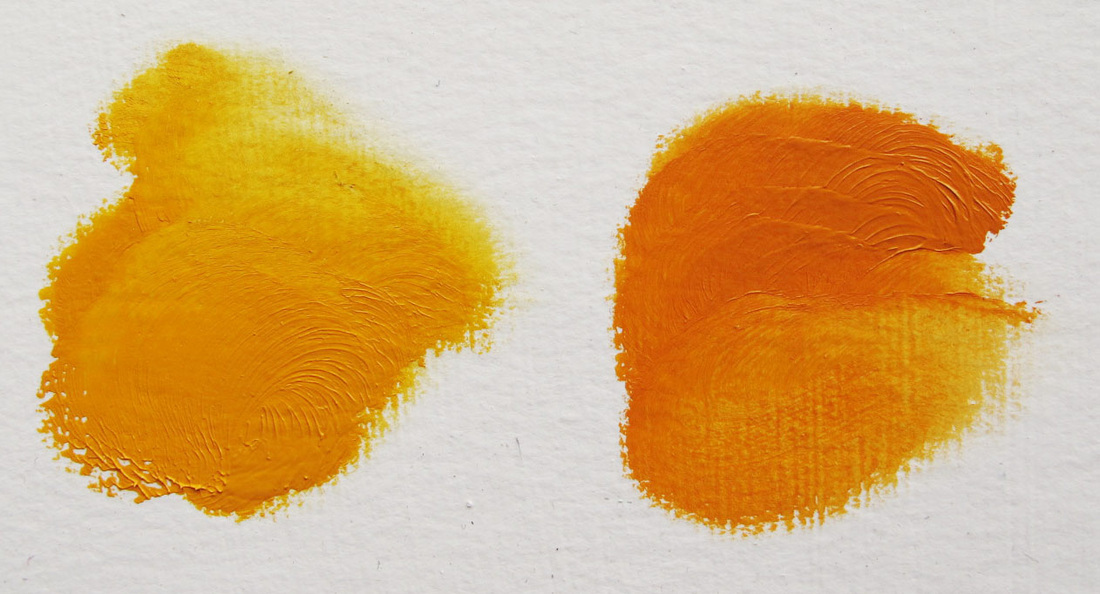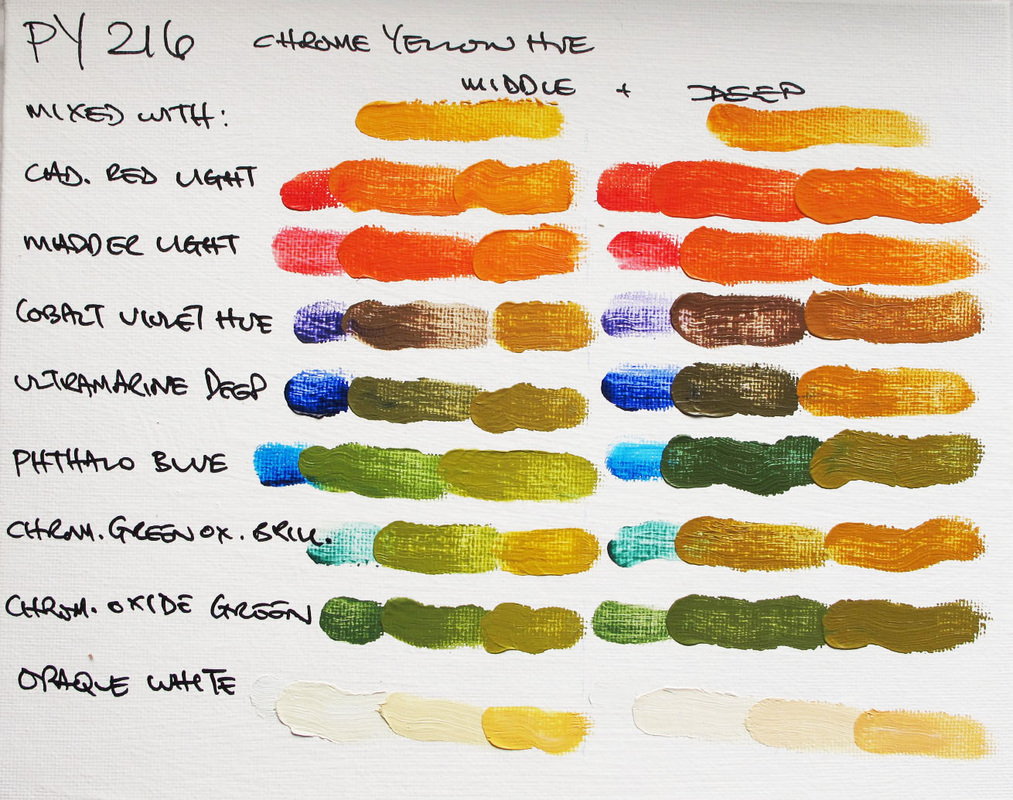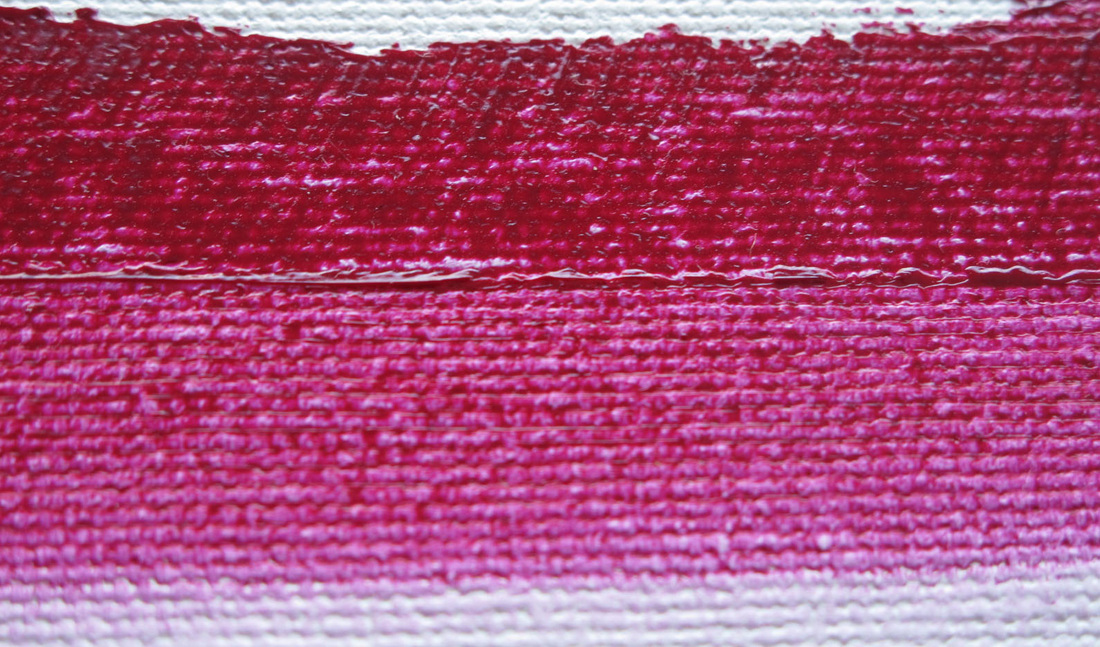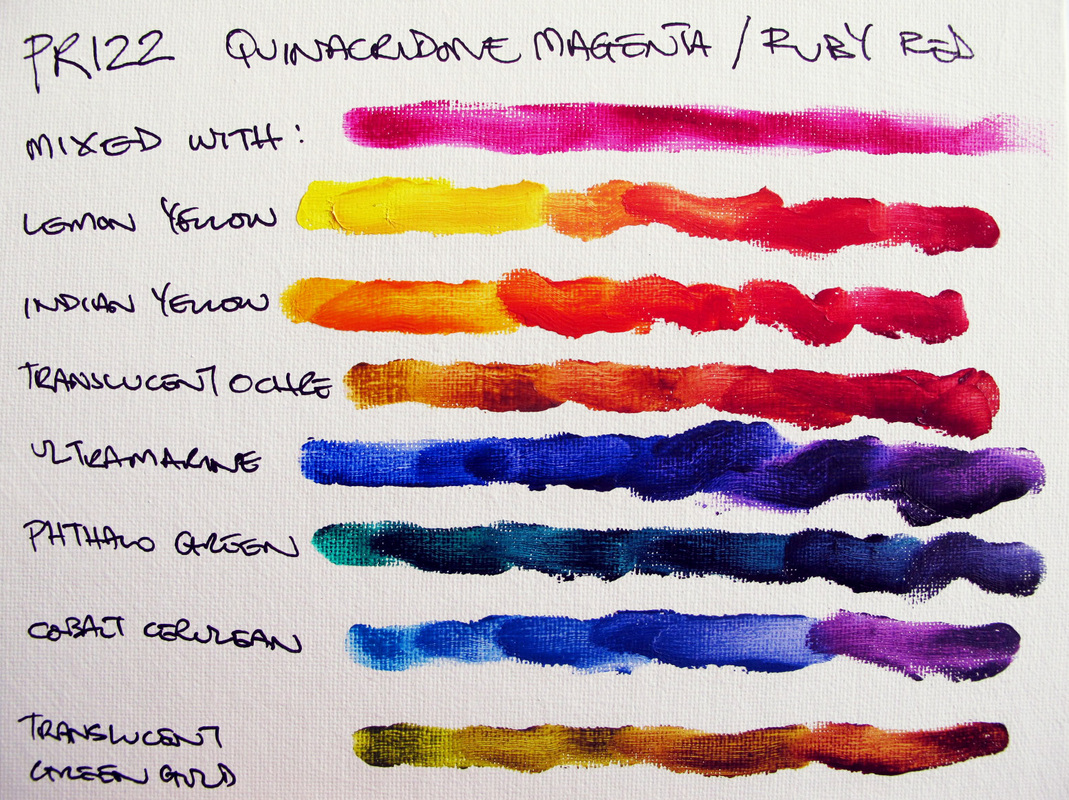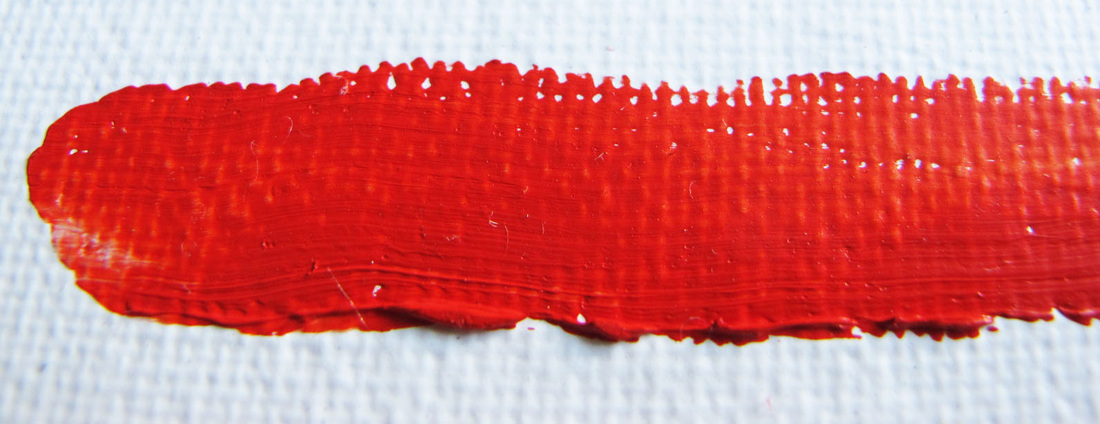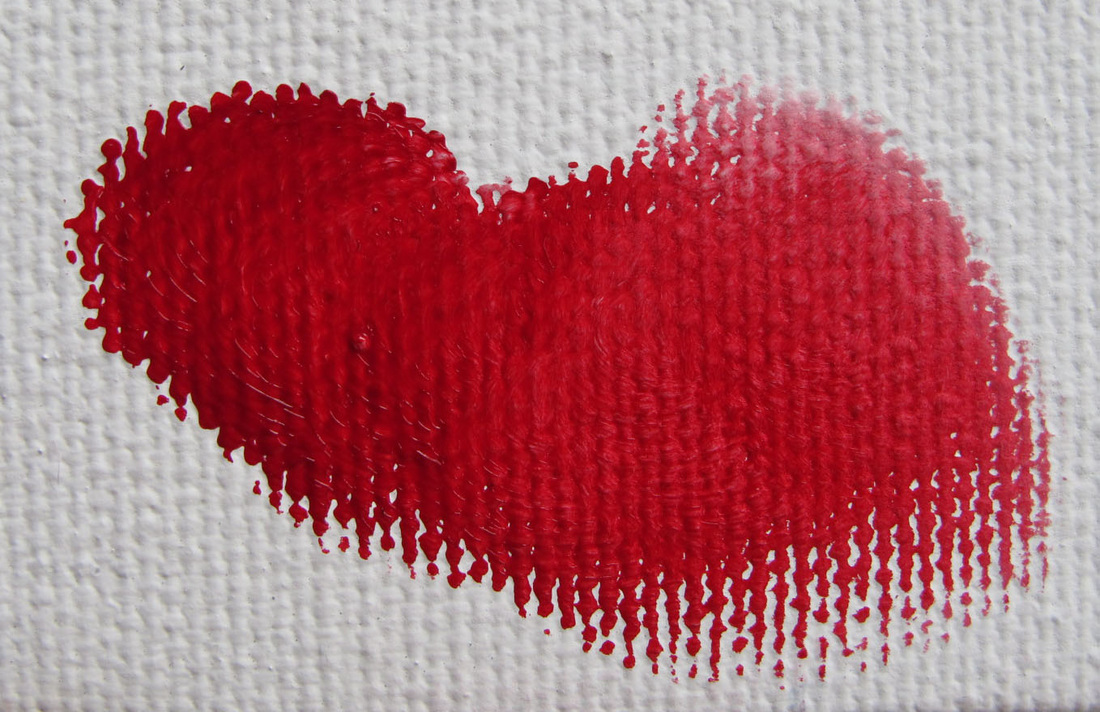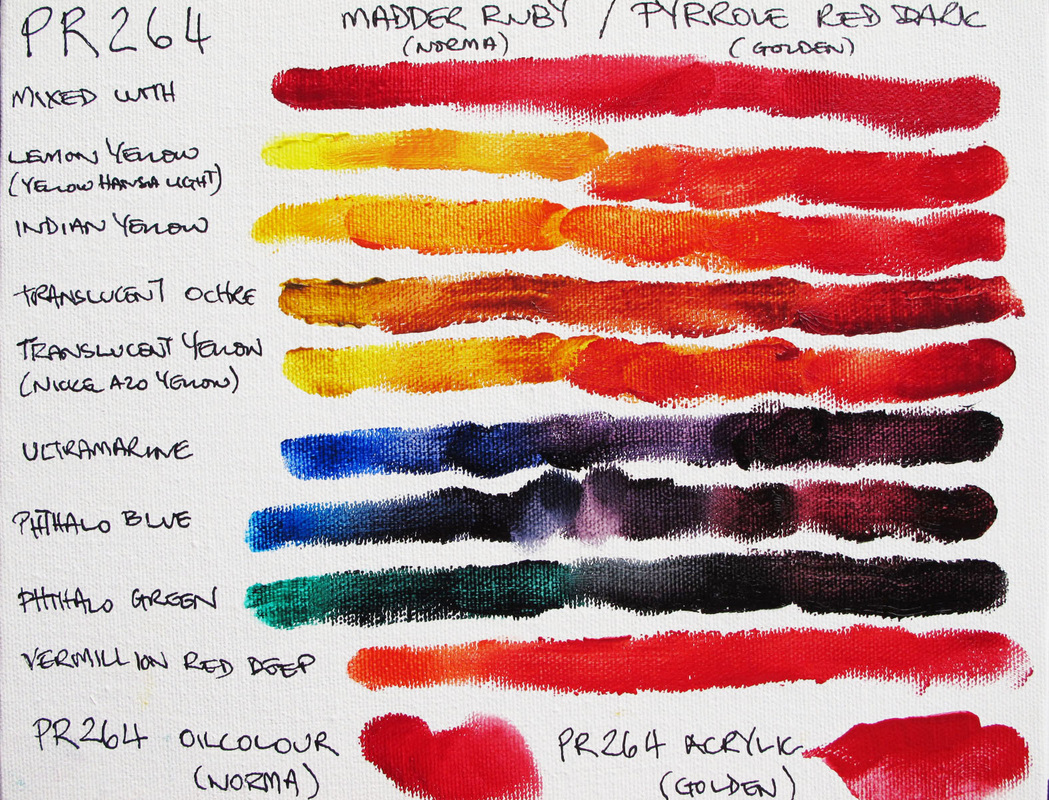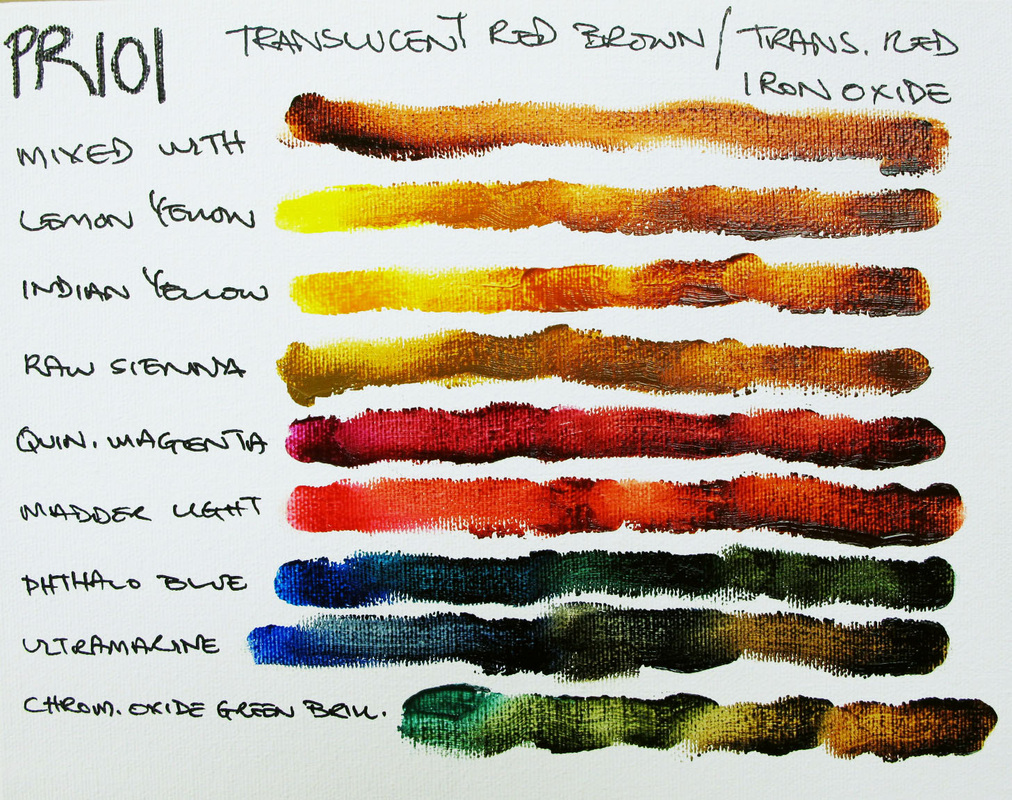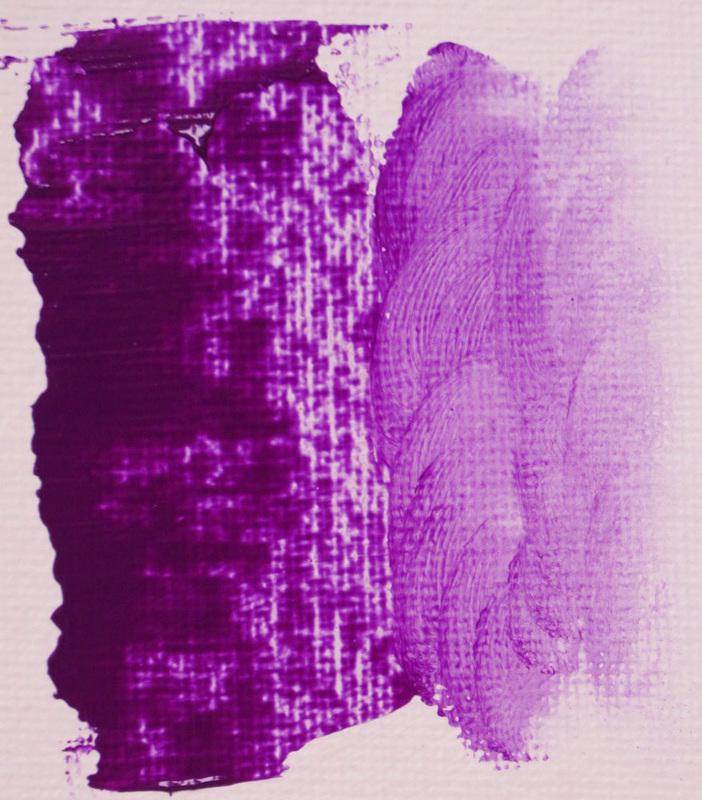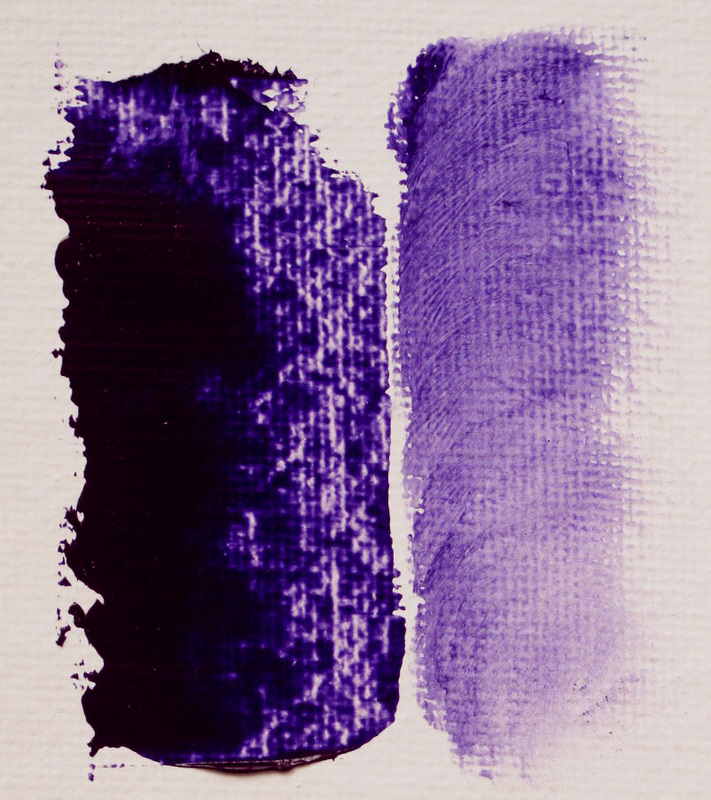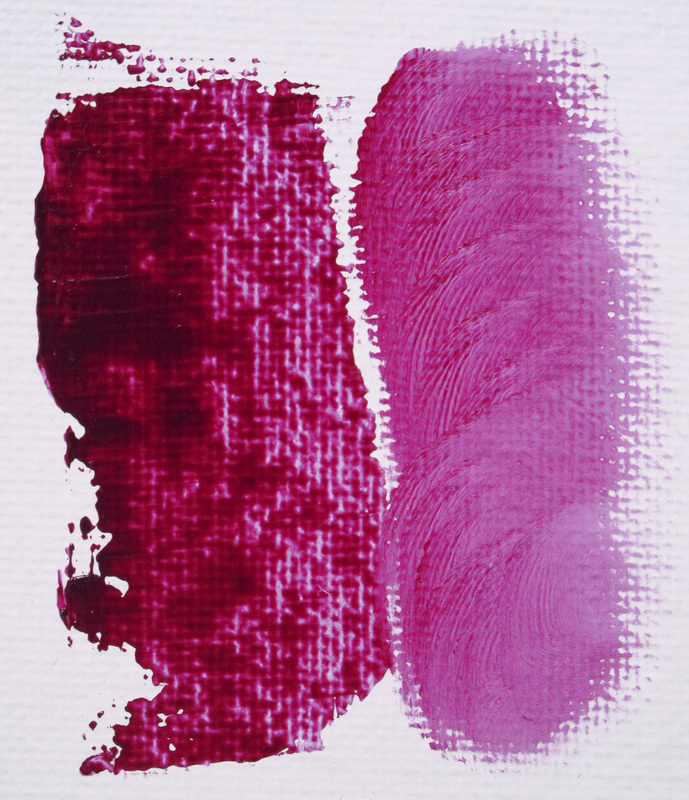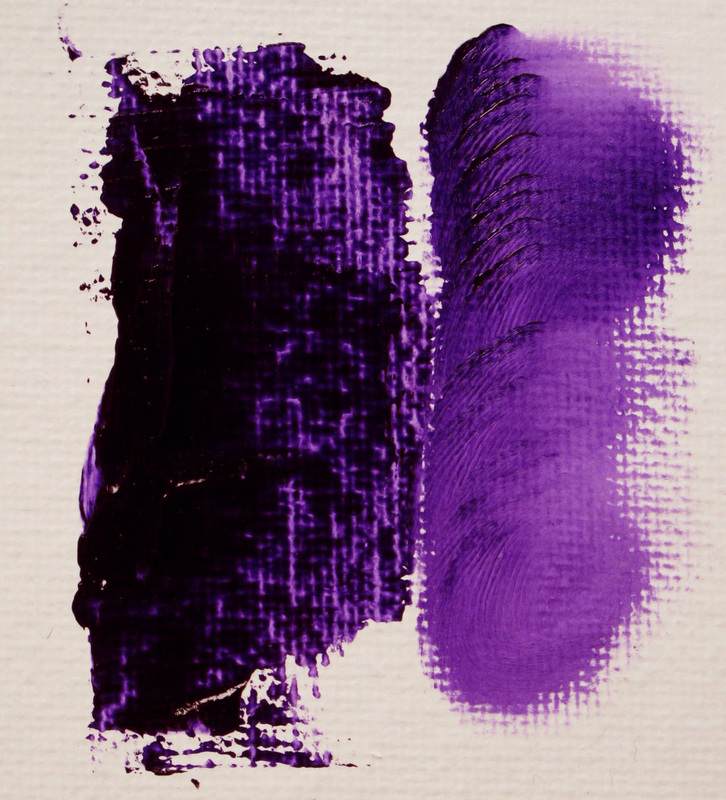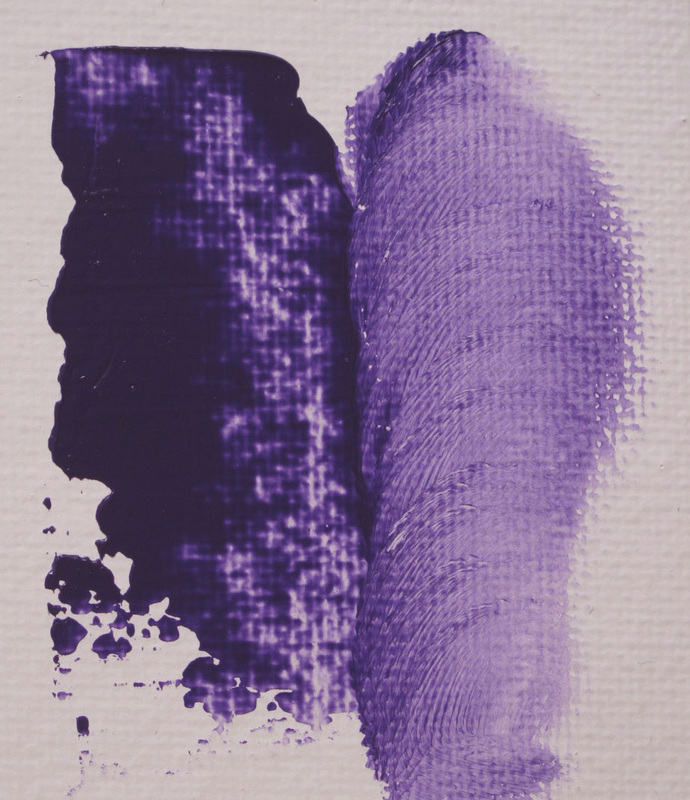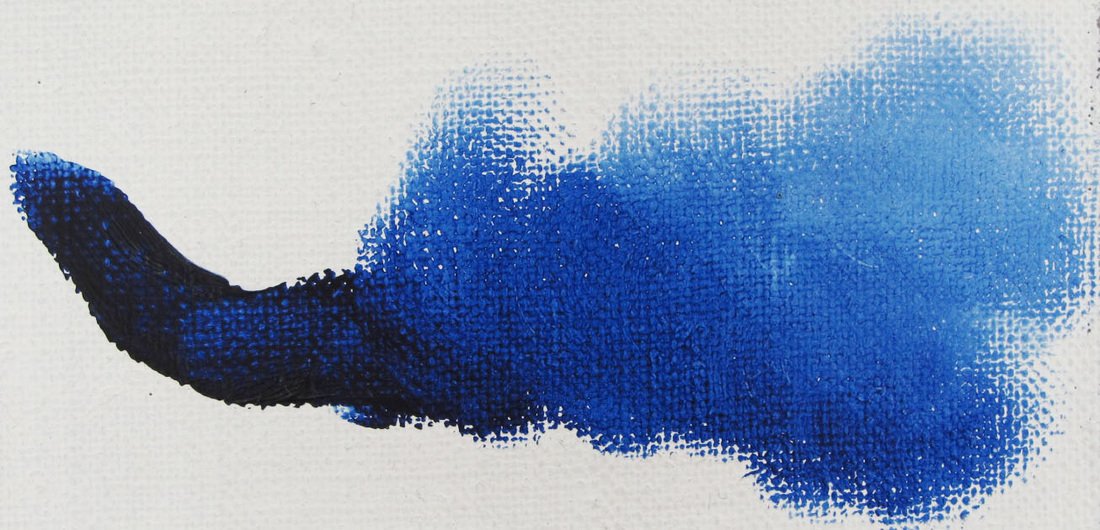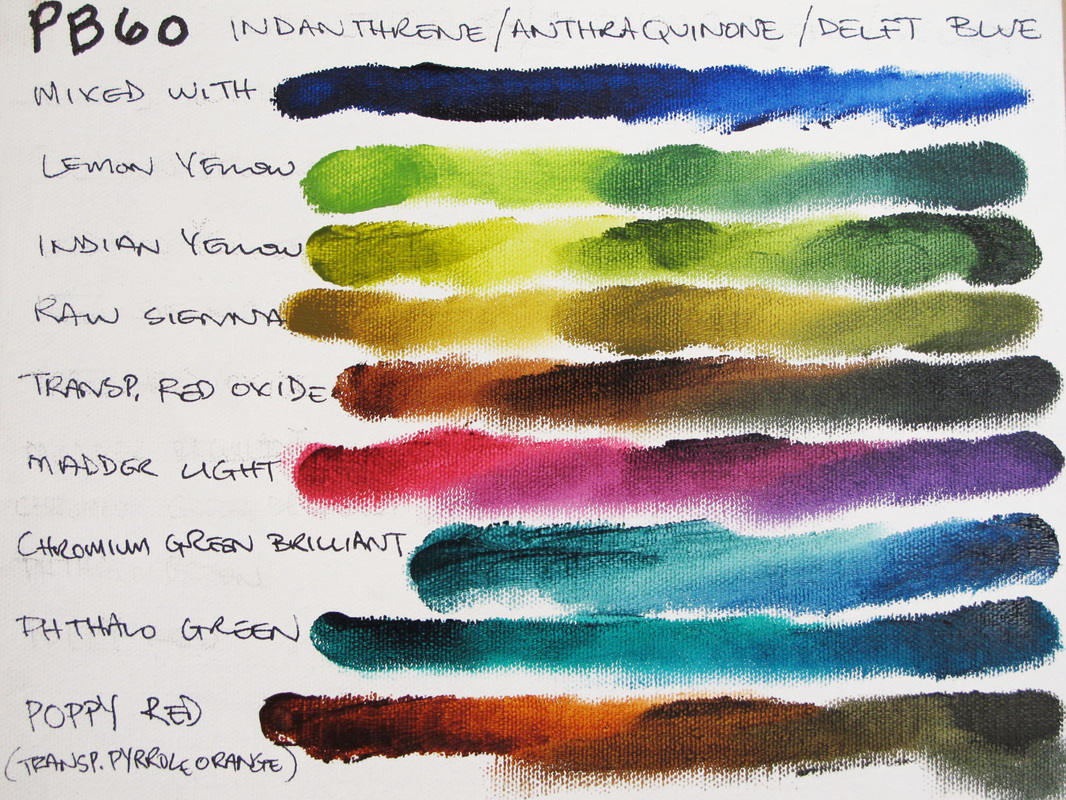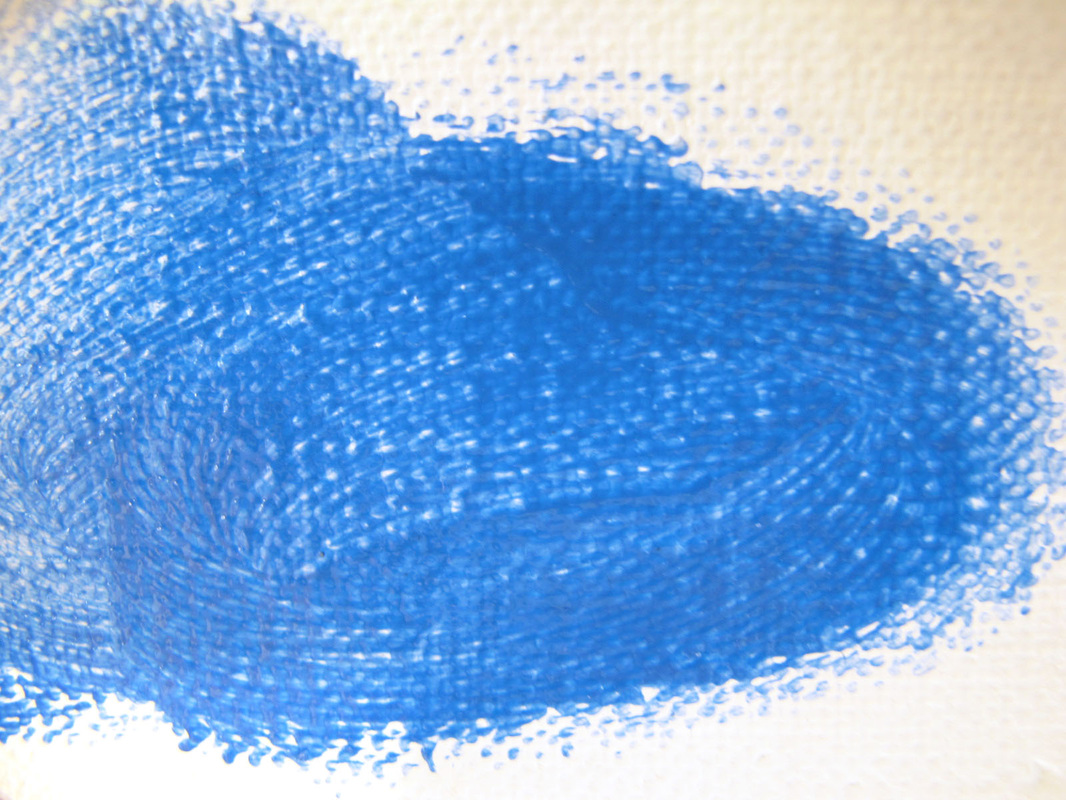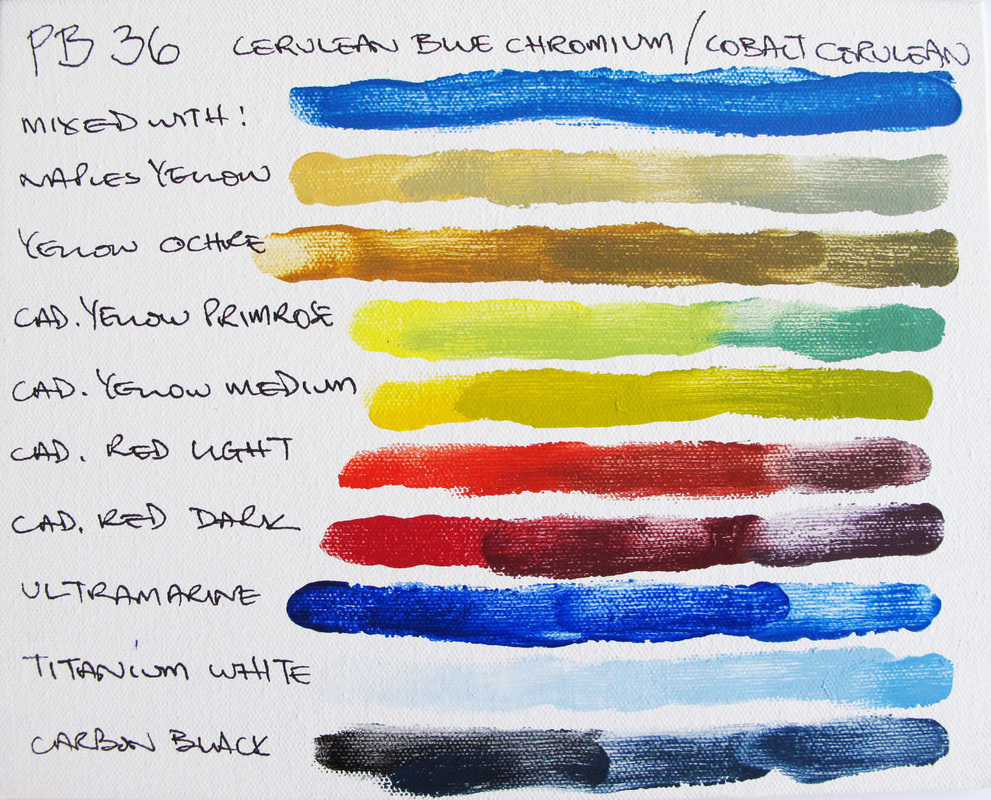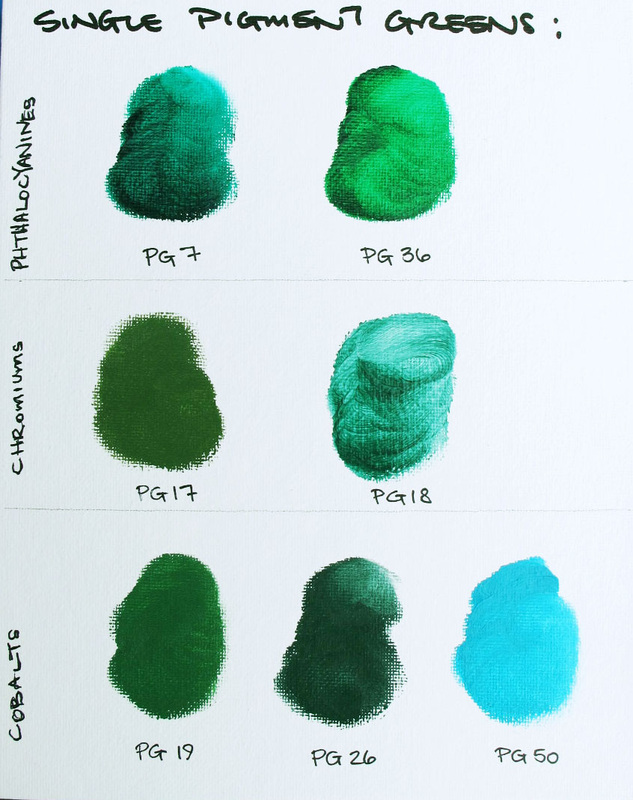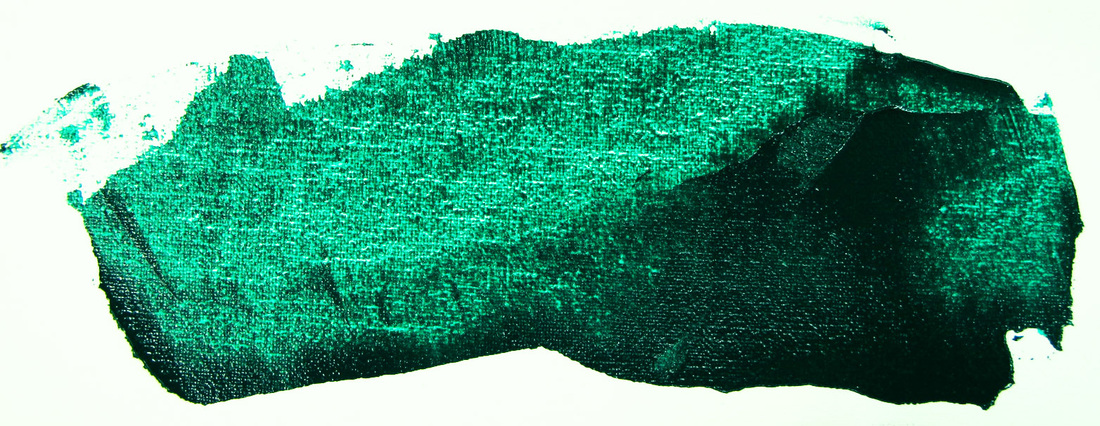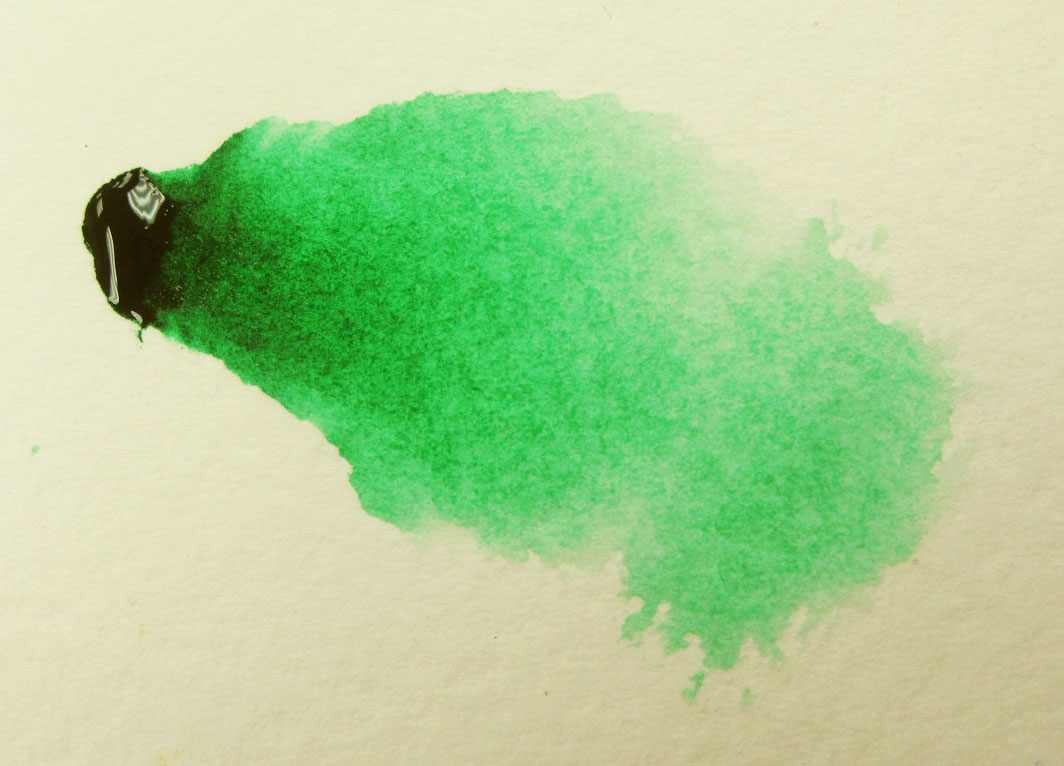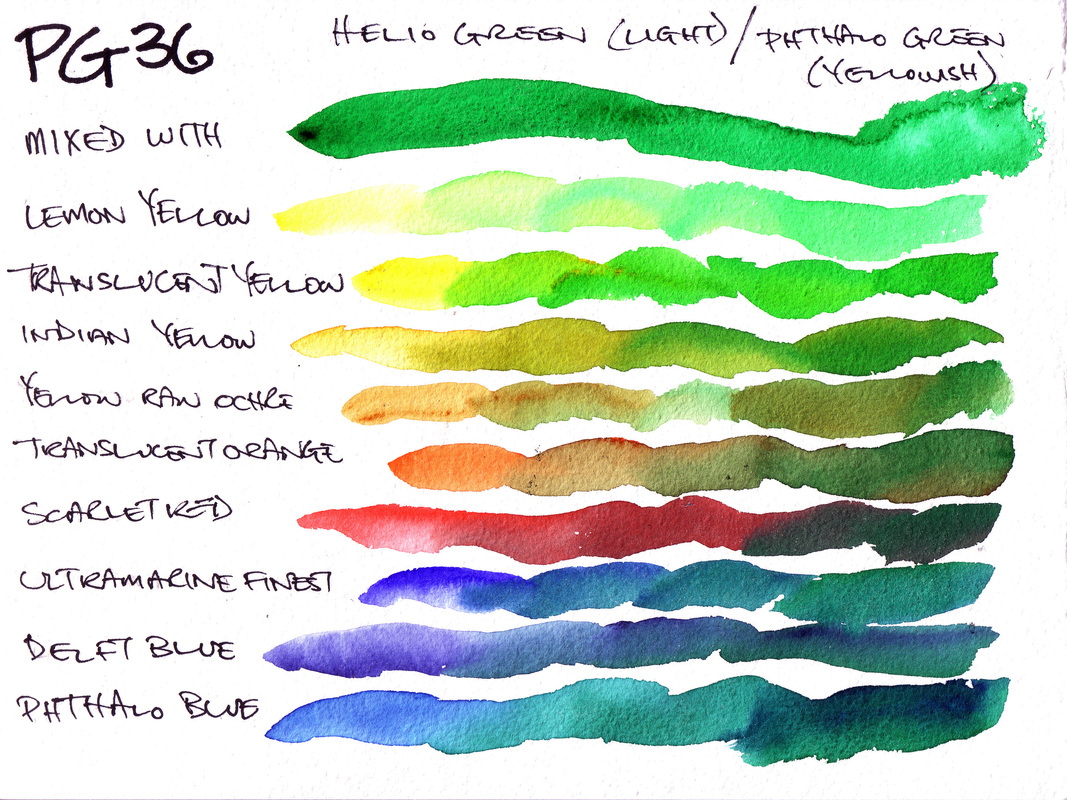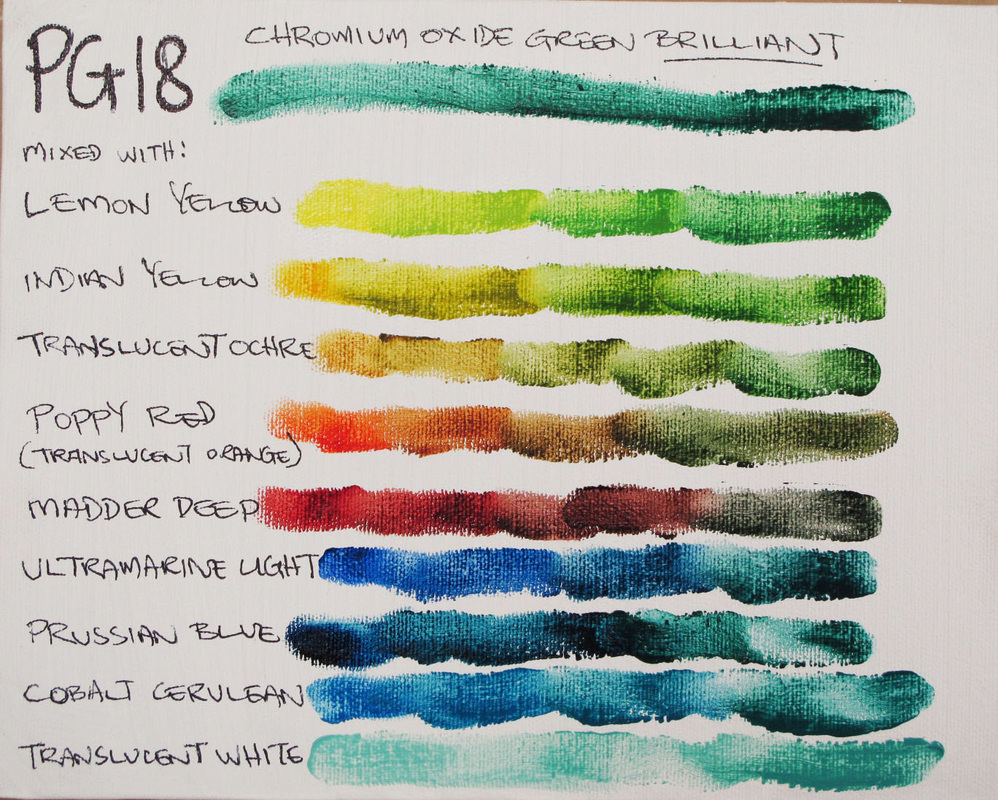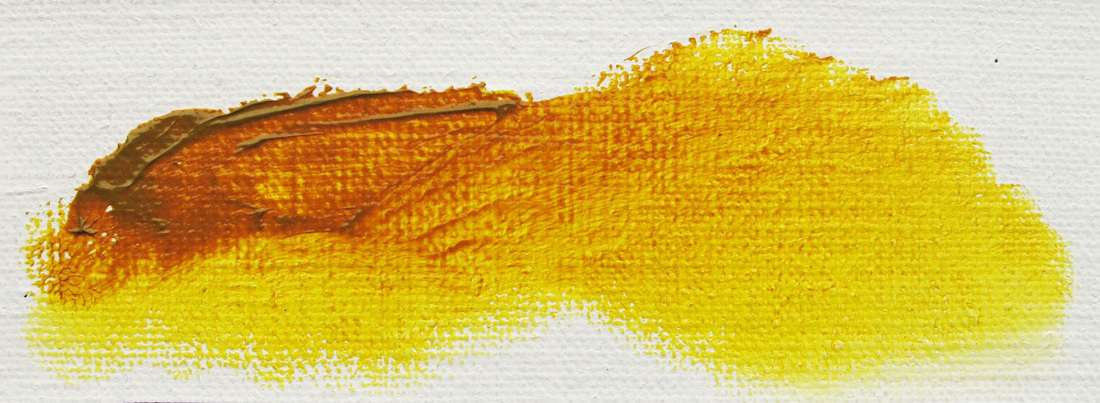
PY150 is called Translucent Yellow by Schmincke & Nickel Yellow Azo by Golden. It's a dull ochre in masstone (thick paint layer) but a fiery yellow in undertone (thin layer). It's one of the two main translucent yellows (the other being Indian Yellow) and is a good replacement for the toxic and weak-strengthed Aureolin.

PY155 is used as a cadmium-free replacement for warmer Cadmium Yellows, and is usually called Cadmium Yellow Tone or Brilliant Yellow (not to be confused with Jaune Brilliant Brilliant Yellow). It has a good opacity & lightfastness, and is warm in masstone through to pale neutral yellow in undertone.
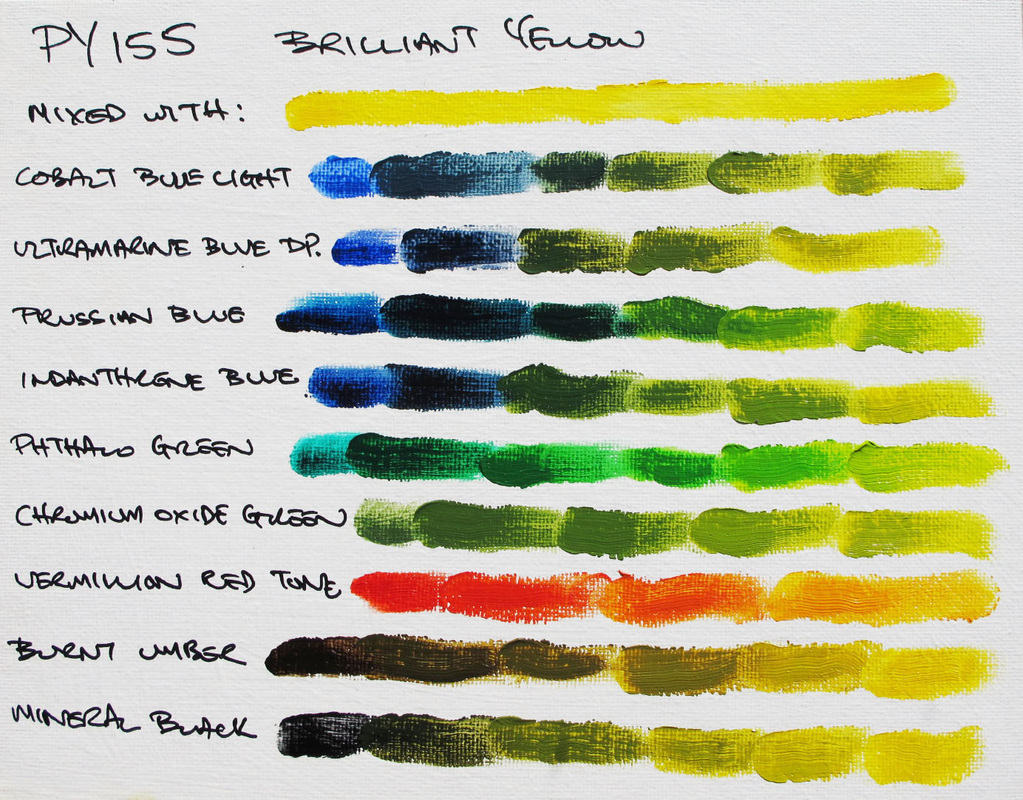
A small amount of PY155 mixed with blues creates muted turquoise hues (more evident on the sample board than this photo) while the addition of more makes a range of warm and vibrant greens. Kikuyu greens result from a mixture with Phthalo Green, and PY155 combines very well with strong pyrrole reds such a Vermillion to create warm oranges and yellows.

PO71 is a rare translucent orange - most oranges are opaque - and so makes an important addition to your palette, for glazing, reducing the value of blues (most of which are also translucent), and hotting up colours. Golden call it Transparent Pyrrole Orange in their acrylics; Schmincke call it Translucent Orange and also Poppy Red (Norma Oilcolours).
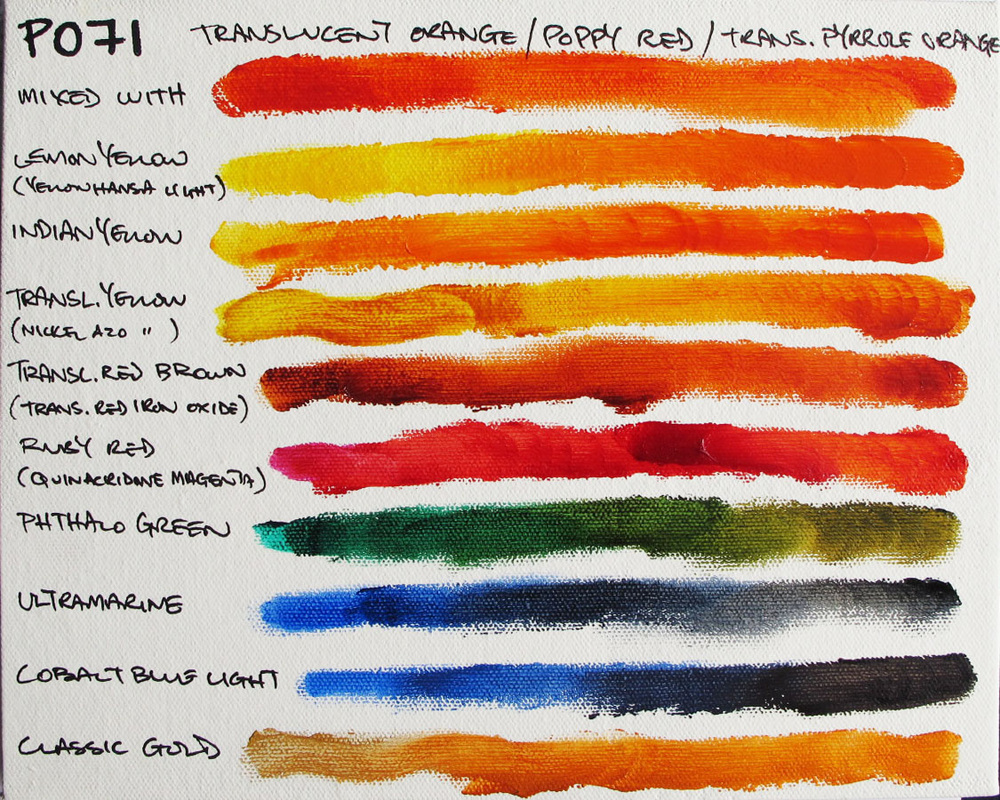
Mixing it with Lemon Yellow creates the widest range of yellows to oranges, though most fiery are the mixtures with Indian or Translucent Yellows. Oranges through to reds are achieved with Quinacridone Magenta, and some good landscape greens with Phthalo Green. PO71 is perfect for darkening blues through to translucent blacks.
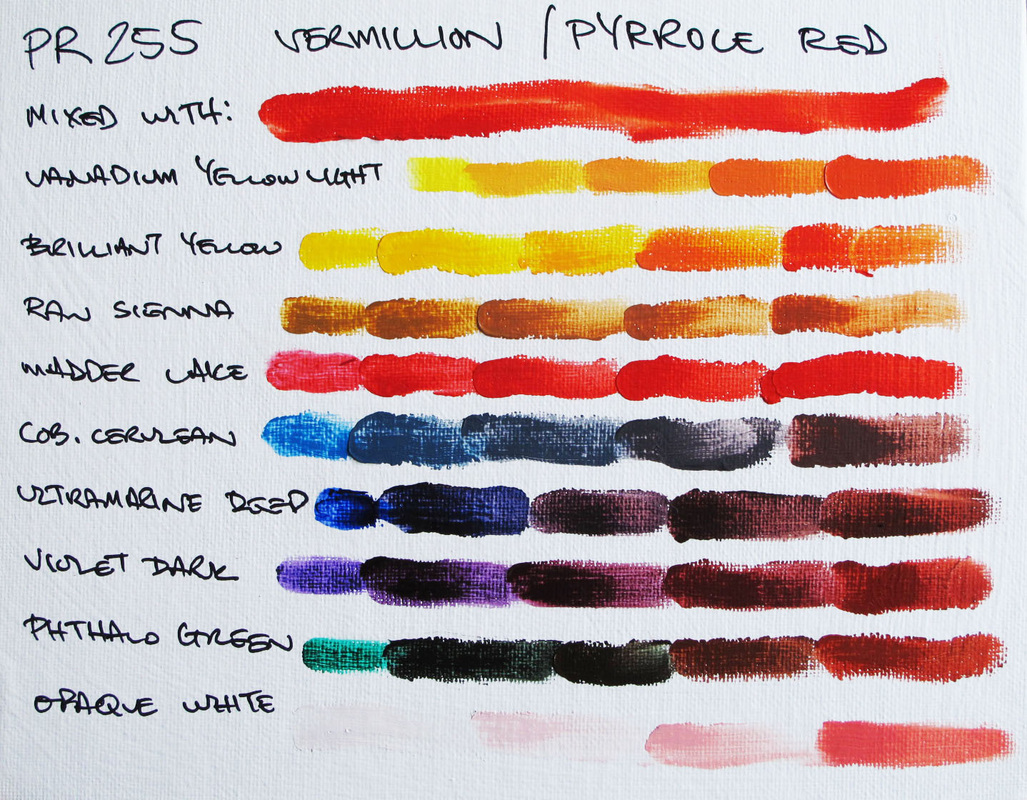
Being so strong, PR255 mixes well with other modern opaque colours such as Vanadium Yellow for brilliant oranges, and is even a match for high-tinting strength colours like Phthalo Green, where it combines to make inky greens and warm blacks. Some particularly lovely purples can be made mixing it with Violet Dark PV23 (Dioxazine). A nice trick with colour mixing is to combine both warm & cool colours in the same hue – Vermillion and Madder Lake above – to achieve really high chroma.
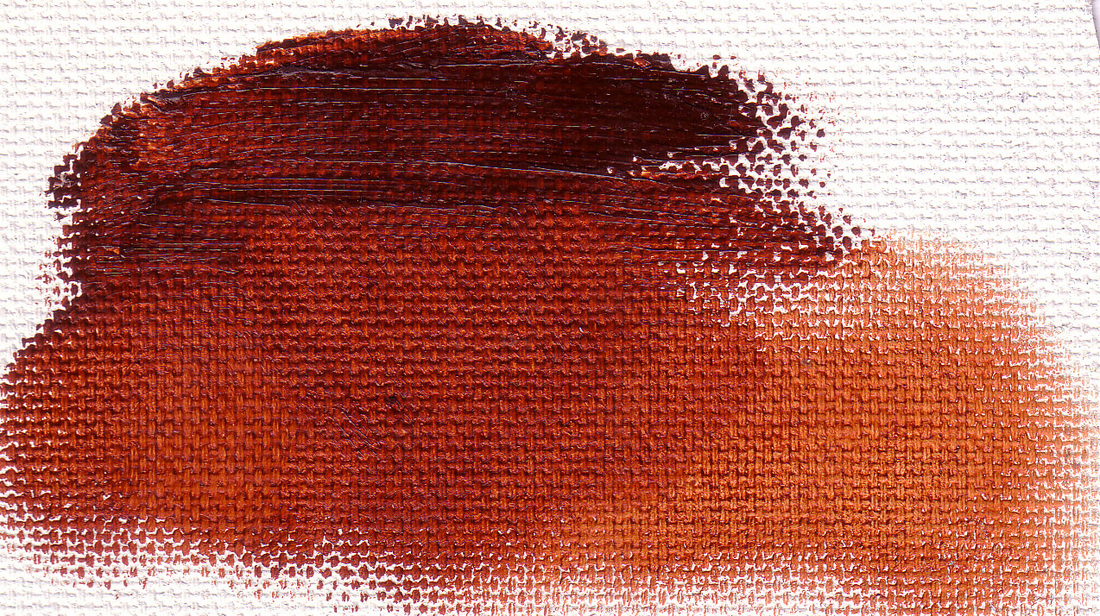
PR101 is a very versatile pigment, made from iron oxide, which produces shades from orange-red through to violet-red, depending on how the pigment is processed. This example is called Translucent Red Brown or Translucent Red Iron Oxide. Most of the other shades are opaque, but this is fiery red in undertone, making it great for adding a rich depth to colours, either in a glaze or as a mixture.
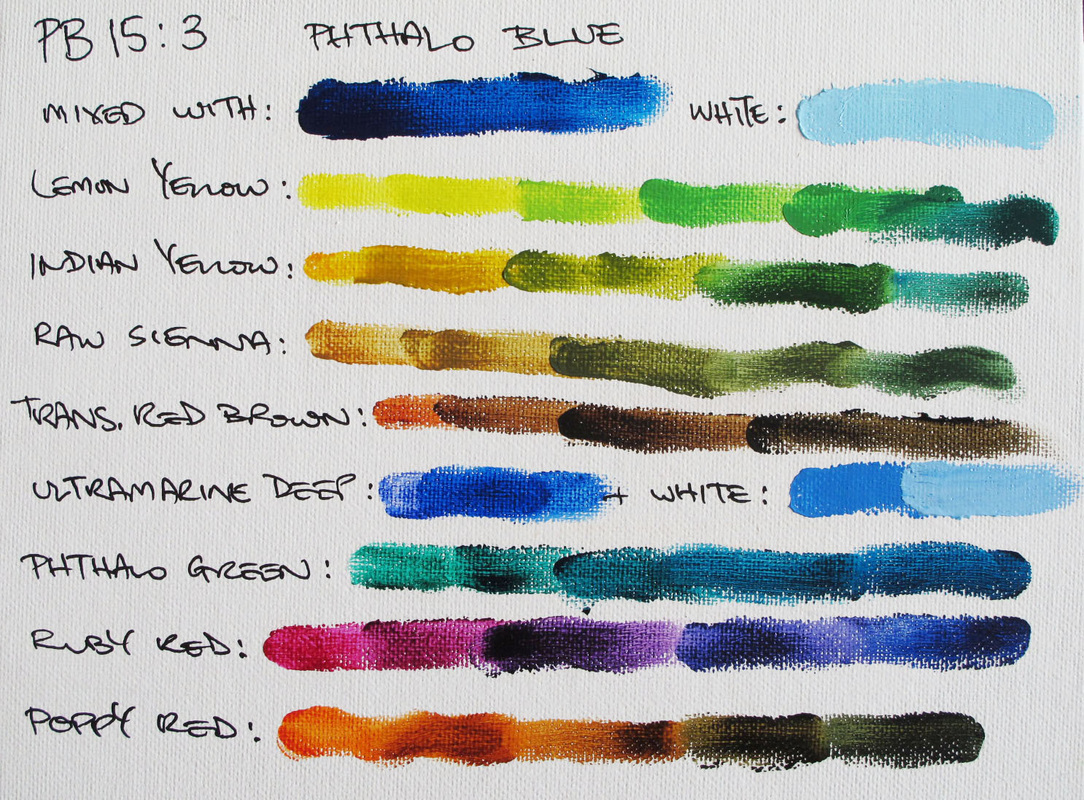
Phthalo Blue makes a wide range of greens, from bright acidic hues when mixed with Lemon Yellow (PY3) through to olive and sap landscape greens when combined with yellow earth tones, such as Raw Sienna. Turquoise blues & greens are made by mixing it with Phthalo Green, and Cerulean by adding white to the bluest turquoises. Combining Phthalo Blue with warm blues such as Ultramarine and white results in lovely Royal Blue shades.

PB28 is Cobalt Blue Light, first developed in 1802 from blue crystals that grew in lead mines (hence “Kobald”, a subterranean dragon), and an important colour alternative to Ultramarine in the 19th Century. Less red & dark than Cobalt Blue Deep (PB74), PB28 is a semi-opaque, inorganic, warm blue that’s very useful in itself as a rich blue, and also in producing muted mixtures. It is imitated in Cobalt Blue Hue through mixtures of Ultramarine & Phthalo pigments.
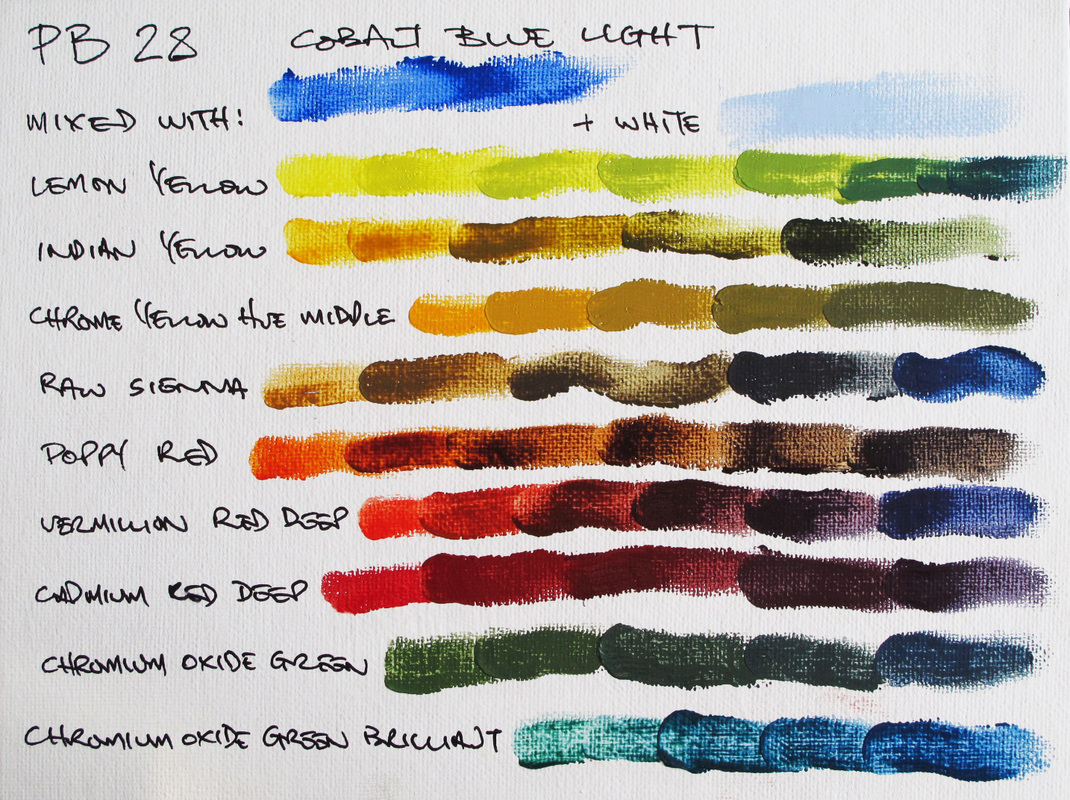
Cobalt Blue Light creates beautiful pale tints with white. In the 19th Century, it was often mixed with black and then reduced with white for skies. Muted landscape greens are easily mixed from yellows, and somber purples with opaque reds. It produces delicate turquoise hues with transparent greens, and can be darkened with P071 (Poppy Red or Translucent Pyrrole Orange).
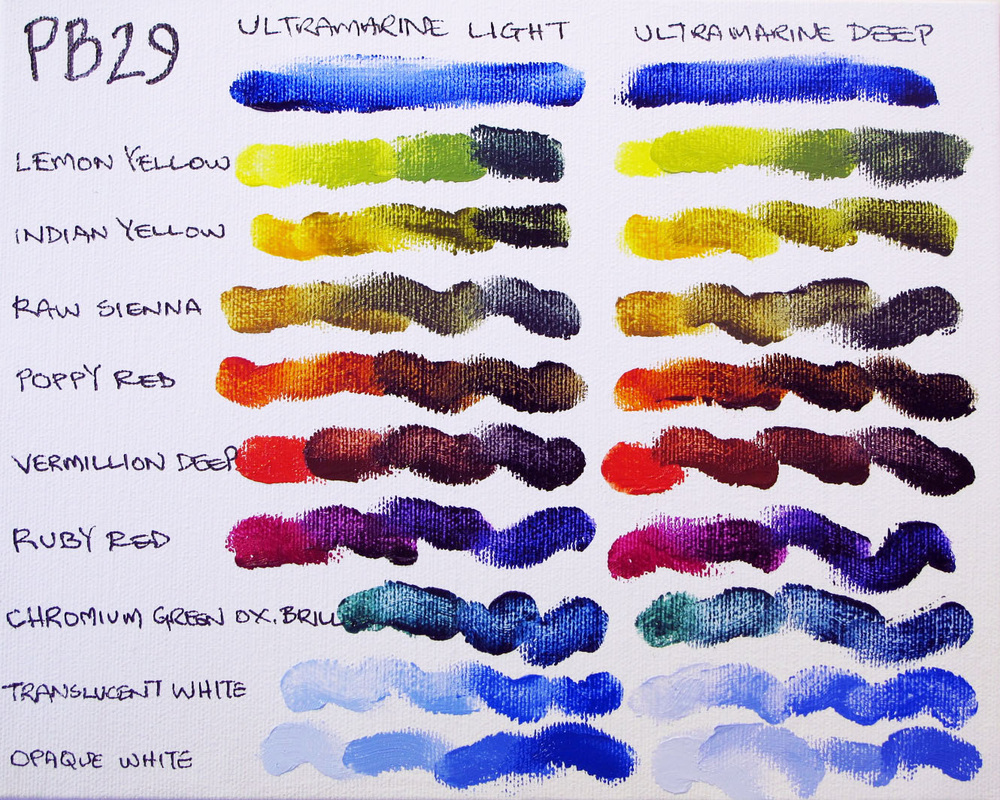
PB29 is Ultramarine, which is available in two shades – Light and Deep. The Deep is what most people recognize as Ultramarine, a deep reddish blue. The Light is a more neutral tone. When used for mixing, Ultramarine Light produces cooler tints and the Deep warmer ones. The most amazing range of violets are produced with Ruby Red (Quinacridone Magenta for acrylic painters). Unfortunately, blues do not reproduce well, with most of the purple tones dropping out, so these mixtures are best viewed on the actual colour board in-store!

Chromium Green Oxide Brilliant PG18 is a bluish-green with a low tinting strength. First discovered in the 19th Century, it quickly became a popular colour for mixing a range of greens. Its low tinting strength also lends it to toning flesh colours. Note the “brilliant” on the end – Chromium Green Oxide PG17 is a very different green!
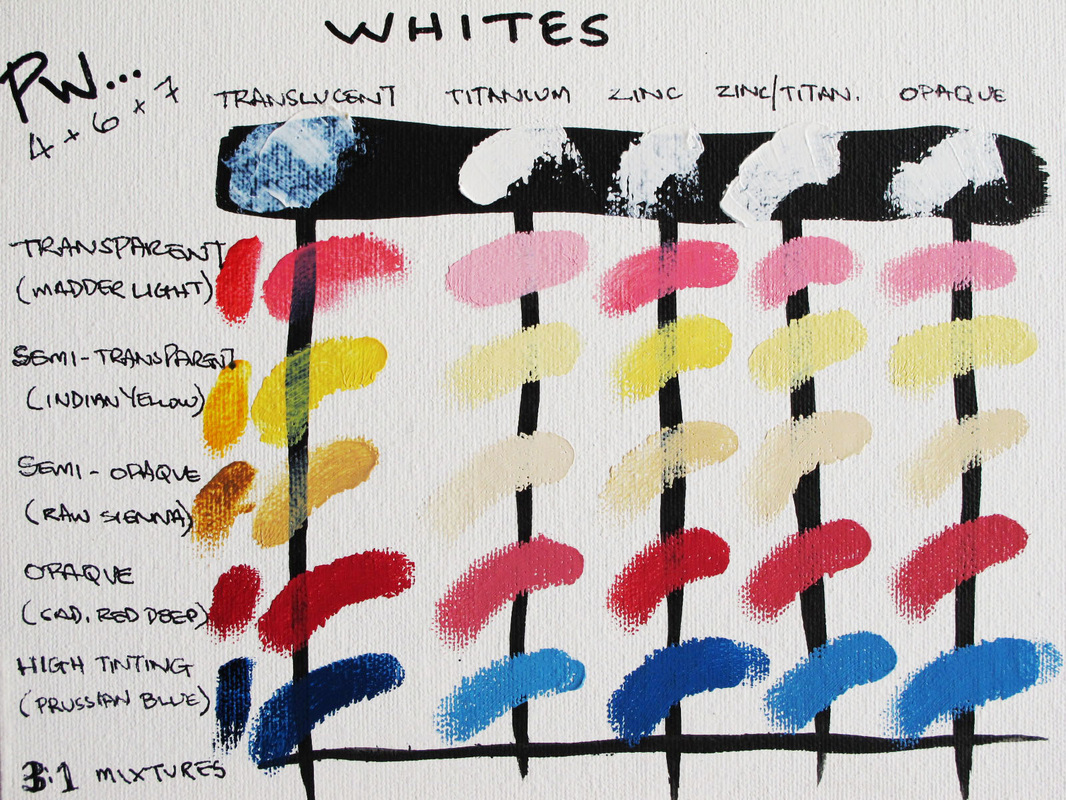
Norma Professional Oilcolours offer five different whites!
Most people reach for a tube of Titanium White, and the Norma is beautifully smooth and brilliant. Titanium is very stable, opaque and with a high tinting strength.
Zinc White is more subtle, and where Titanium can make colours seem pastel, Zinc keeps the colour’s chroma more intact. Zinc Oxide can be problematic, however, and is best used thinly, as it can embrittle and have surface-tension issues.
Zinc-Titanium White combines the best of these two pigments – more subtle than Titanium, but with Titanium’s stability, this is an excellent all-round white for mixing and for highlights.
Translucent White maintains the glazing qualities of translucent colours while still lightening them, making this a very useful white. Translucent White can also be used to create veils and smoky effects in painting.
Opaque White is a unique, soft and clear white, which is great for lightening opaque and high-tinting strength colours. Opaque White tends to maintain the colour’s chroma more than Titanium, and is much more stable than Zinc Oxide.
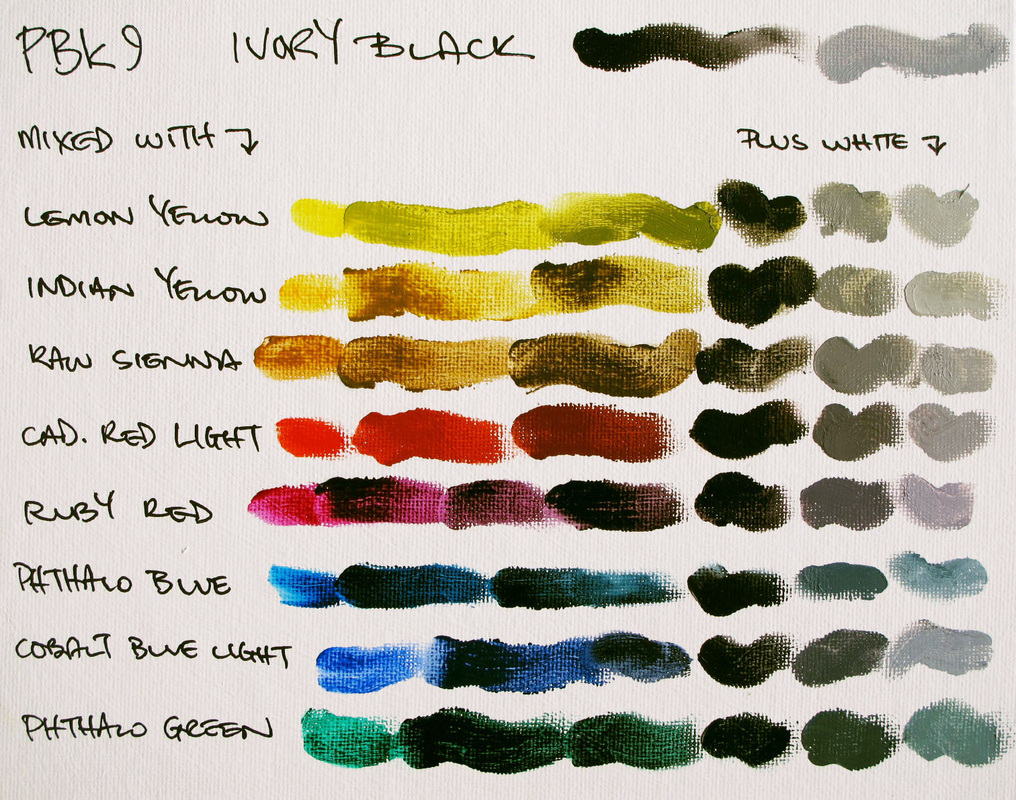
Just a speck of black added to yellow creates bright greens, and natural earth colours that sit well in landscape painting when combined with yellow earths, such as Raw Sienna. Black is good for darkening reds and lends a sinister aspect to Phthalo Blue. Successful sky tones can be achieved using Cobalt Blue with some black added, then reduced with white. Combining black with other colours and reducing with white produces many shades of cool & warm grey.

One way to incorporate gold into a painting so that it harmonises with other non-metallic colours, is to mix it with those colours. Here gold has been mixed with Quinacridone Magenta (left) and Manganese Blue (right) to achieve unique metallic hues. The proportion used was approximately 5:1 metallic:standard colour.

Interference colours interfere with white light, causing a “flip-flop” effect on a white surface. Interference Violet (above left) changes between violet and green, depending on the angle it’s seen on. These strange colours don’t follow the same rules of mixing as usual colours. If you mix a violet and a green together, you’d normally get brown, but here even a very small amount of green turns the Interference Violet… green! This is because there is no violet pigment involved, rather: an interference with the wavelength of violet light.
